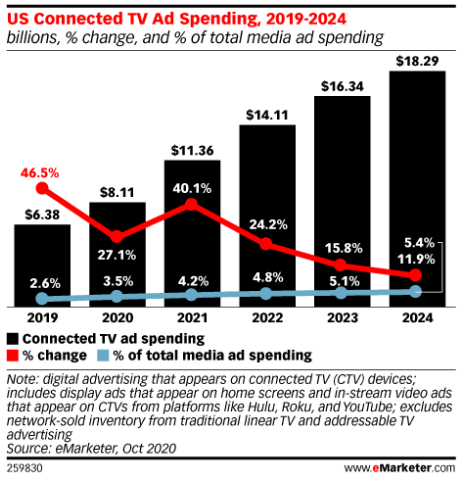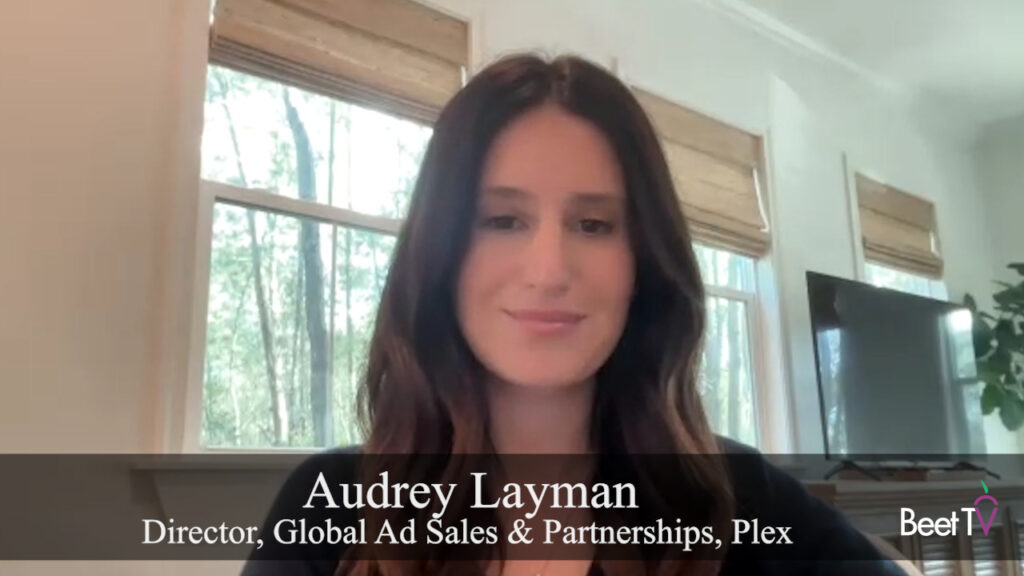Millions of U.S. households are hooking up their TVs directly to the internet, opening a pathway for advertisers to reach them through the growing number of video streaming services. As consumers split their viewing time among those digital channels and more traditional linear TV, marketers are adapting their media strategies to reach them.
Cadillac, the luxury car brand owned by General Motors, has embraced an “audience-first” approach that considers the best ways to reach consumers as they take steps toward making a final purchase. That audience-based approach covers traditional linear TV and the newer streaming video channels whose viewership has grown dramatically, especially since the onset of the pandemic.
“The landscape is changing so quickly right now for TV,” Melissa Grady, chief marketing officer of Cadillac, said in this interview with Beet.TV. “We used to look at our media plan, and say, ‘here’s what our linear plan is,’ and then, ‘how do we fill in with some of these other mediums?’ We’re now saying, ‘where is our audience?'”
Marketers this year will increase their spending on connected TV (CTV) advertising by 40% to $11.4 billion in the United States, researcher eMarketer forecast. Some of the growth reflects the return of advertisers that had cut back their spending in 2020 as the global economy slowed during pandemic lockdowns. Still, the double-digit gains are expected to continue for the next few years.

Source: Insider Intelligence/eMarketer
“The beauty that some of these new platforms are bringing is that we can start to understand what messages are reaching consumers and how they’re reacting,” Grady said. “That’s were Samsung came in. They really helped us in this pilot that we ran” to measure how CTV ads lead to a final sale.
Audience data help Cadillac to evaluate the effects of its messaging, and move past the more traditional metrics of reach and frequency that have been a key part of media measurement for decades.
“One of the things that we as an industry need to do is redefine ‘reach and frequency,'” Grady said. “Right now, we’re saying, ‘We’re probably hitting 80% of our audience two to three times.’ When we start with an audience, what we can really start to understand” consumers on a deeper level, including where they are in the buying process.
“Instead of saying, ‘I have this one message, and I hit this target probably two to three times, I can start to have a much better conversation,” Grady said. “If you’re not in market, I can start to introduce you to the Cadillac brand, create some desire that’s longer-term and hopefully start to do some things that are a little bit more interesting.”
Introducing ‘Edgar Scissorhands’
As much as consumers express annoyance at intrusive commercials, they also are receptive to the right messaging at the right time. Grady points to the two ads that GM ran during the Super Bowl, including one for Cadillac’s all-electric Lyriq luxury crossover model that spoofed the 1990 movie “Edward Scissorhands.”
https://youtu.be/PeXiA0BewhU
“We always talk about how consumers don’t like ads, they’re disruptive,” Grady said, “but consumers do love advertising.”
Cadillac’s ad, which starred actor Timothee Chalamet as Edward’s son, Edgar, and actress Winona Ryder reprising her role from the original movie, showed off the electric car’s Super Cruise hands-free highway driving-assist technology. GM also ran an ad starring actor Will Ferrell to showcase its lineup of electric vehicles.
“People are loving those ads,” Grady said. “When we can have advertising come in a way that is entertaining, is the message that someone wants at the right time, and we’re not overserving them, then advertising can help enable some of these platforms consumers want to engage in at a better cost.”
You are watching “Media Innovation: What’s Next,” a Beet.TV leadership series presented by Samsung Ads. For more videos, please visit this page.

































